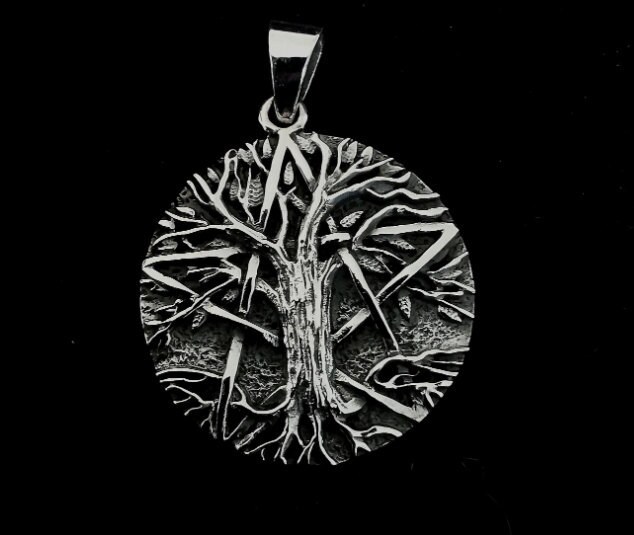Many cultures and religions throughout history have referenced the Tree of Life in their sacred stories. In Christianity, the Tree of Life is mentioned in the Bible’s Book of Genesis as standing in the Garden of Eden, a source of eternal life. The same concept reappears in the Book of Revelation, symbolizing the reward of the faithful in heaven.
In Norse mythology, Yggdrasil is the cosmic World Tree, an immense ash tree that connects the nine worlds. Its roots stretch into different realms, including those of the gods, humans, and the dead. Yggdrasil represents the balance of the universe and the eternal cycle of creation and destruction.Similarly, in ancient Mesopotamian myths, the Tree of Life was often depicted as a divine connection between the heavens and the earth. The Sumerians and Assyrians carved images of sacred trees, believed to be conduits between mortals and the gods.
The concept also appears in Buddhism, where the Bodhi tree under which Siddhartha Gautama attained enlightenment is considered a version of the Tree of Life. In Hinduism, the Kalpavriksha, a wish-fulfilling tree, symbolizes divine knowledge and abundance.
Beyond its religious and mythological roots, the Tree of Life also plays a crucial role in scientific understanding. In biology, the Tree of Life is a metaphor for the evolutionary relationships among species. This idea was famously illustrated by Charles Darwin, who proposed that all life on Earth shares a common ancestor.The evolutionary Tree of Life depicts how species branch out from common ancestors, evolving over millions of years. Scientists use genetic data to construct phylogenetic trees that trace these relationships, showing how different species are linked. The deeper the branches, the further back in time their common ancestor existed.This scientific approach to the Tree of Life emphasizes the interconnectedness of all living organisms, from bacteria to humans, reinforcing the idea that life is a continuous and interdependent web.
Artists and writers have long used the Tree of Life as a source of inspiration. From ancient cave paintings to modern digital art, this symbol has been depicted in various forms, often illustrating themes of growth, resilience, and unity.
One of the most famous artistic depictions of the Tree of Life is Gustav Klimt’s painting, "The Tree of Life, Stoclet Frieze." This masterpiece uses swirling branches and golden hues to convey the idea of eternal connection and the cycle of life.In literature, the Tree of Life appears as a recurring motif, representing knowledge and wisdom. It can be seen in the works of authors like J.R.R. Tolkien, who wove elements of mythology and nature into his stories, creating deep symbolic meaning in trees like the White Tree of Gondor.
On a personal level, the Tree of Life serves as a metaphor for human development and self-discovery. Just as a tree starts from a seed and grows its roots deep into the earth while reaching for the sky, people also grow through experiences, challenges, and learning.
The roots symbolize our foundation—our past, ancestry, and values. The trunk represents our present strength and identity, while the branches signify our aspirations, dreams, and the paths we take in life. This analogy helps people relate to the Tree of Life as a symbol of resilience and the continuous journey of self-improvement.
In today’s world, the Tree of Life continues to hold significance in various fields. Environmental movements often use the tree as a symbol of sustainability and ecological awareness. With deforestation and climate change threatening the planet, many organizations adopt the Tree of Life as a representation of the urgent need to protect nature.
The Tree of Life is also a popular theme in jewelry, tattoos, and home décor, signifying a deep connection to nature, family, and spirituality. People wear Tree of Life pendants or display artwork as reminders of their own growth, heritage, and the interconnectedness of all living things.


